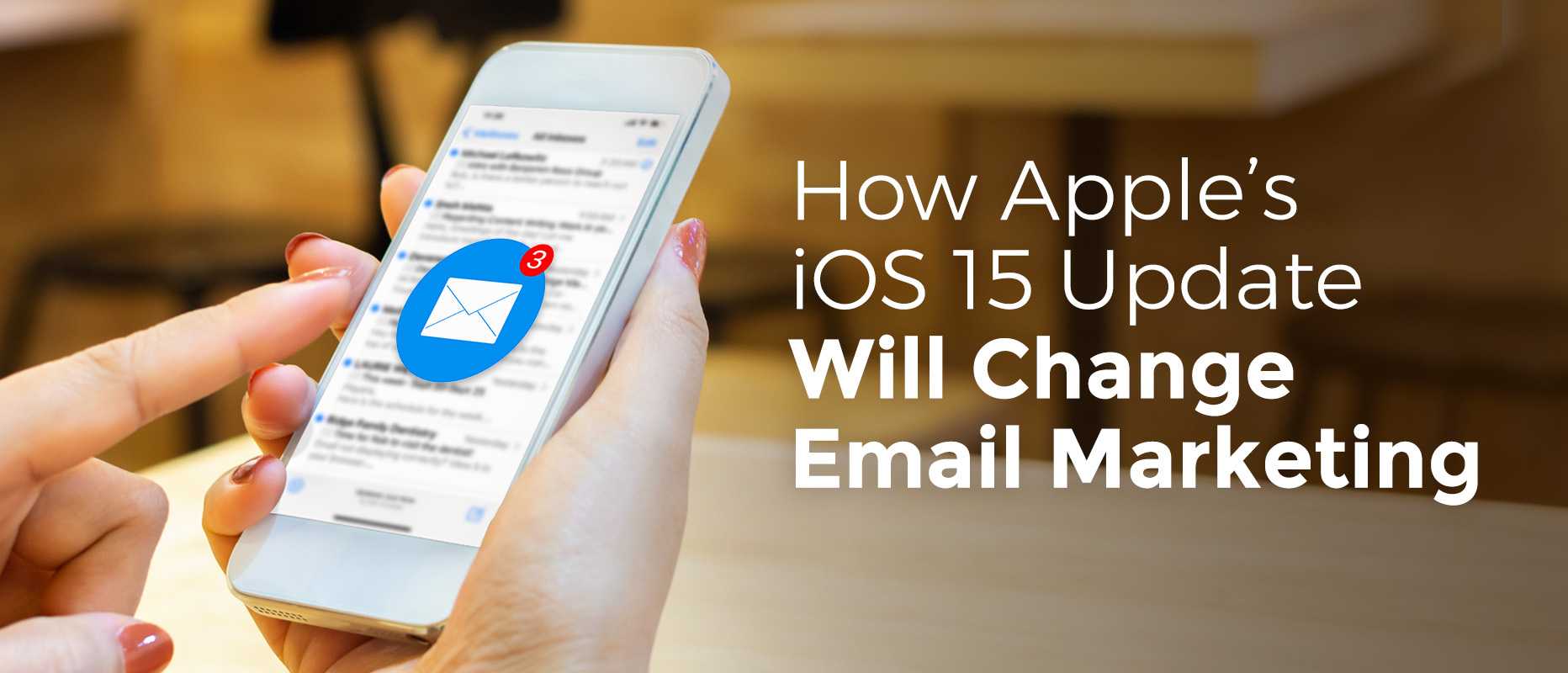Apple’s iOS 15 update is here, and it promises to change email marketing.
Why? Because the update includes changes to privacy protections, which might be warmly welcomed by the consumer in all of us but loathed by businesses with advertising needs.
As specialists in both B2B and B2C marketing, we’ve come to take “accessible email marketing data” as a given. But, unfortunately, that data may no longer be accessible.
What is the iOS 15 update?
Simply put, Apple will offer Mail app users the option to select “Mail Privacy Protection” as a setting. This setting will limit the amount of data available to brands and companies using email marketing and tracking pixels, which provide insights into how users interact with their emails.
With iOS 15, we will no longer have access to:
- When and where emails are opened
- Results from hidden pixels
- IP addresses that prevent connecting users to their online activity
Does it doom email marketing?
Email marketing has been around for just about as long as email itself. Despite countless attempts to end its tenure as a reliable marcom vehicle, it continues to reinvent itself.
Could the iOS 15 update be the death-knell to email marketing? It’s unlikely. However, it does promise to deliver change. How much change depends on the main factors that will determine the scope of its impact. Inputs to consider:
- How many people use Apple mobile products (about half of U.S. smartphone owners)
- How many users will opt-in to “Mail Privacy Protection”
- How successful marketers will be at adapting to other metrics
In practice, what will users see?
The good news is that Mail Privacy Protection is not enabled by default. When they launch the Mail app in iOS 15 for the first time, users will be asked if they want to enable privacy protection. It can be turned on and off manually at any time by going to Settings > Messages.
What will need to change with my email marketing?
On its face, the way you track email marketing engagement will change. Open rate data will no longer be a viable metric, and with it will go additional items that rely on open rates such as list health, segmentation and automation triggers. Also changing will be the way we personalize drip campaigns and related communications that depend on open actions.
But fear not. While we will give up the initial engagement indicators from third parties, we will still be able to track further down the funnel with click-through and conversion rates where that traffic lands. More weight needs to shift to this first-party data anyway because it delivers better-qualified leads.
We can continue using UTM codes on hyperlinks and call-to-action buttons so we will still be able to track traffic to landing pages on our websites. These tactics will sharpen our site performance tracking in Google Analytics and ultimately integrate results more closely with our overall marketing plan.
By holistically looking at email’s contribution to website conversion—instead of email metrics themselves—it puts an even higher premium on quality content that drives meaningful action so we can directly measure important data.
How do I prepare for the iOS 15 update?
- Run an email marketing audit. Review your plan and individual assets to see where you rely on data that will no longer be available. Then, consider adjusting your practices to drive increased engagement and improve the first-party data tracking you depend on for clarity.
- Optimize opt-in. Be sure that every form on your website includes either a clear statement of opt-in with submission or a check-box option that defaults to opting-in. Focusing on building subscribers who opt-in will result in higher engagement because the recipients want to receive your email communications.
- Pinpoint new metrics. Without open rates being available, we can immediately look to more impactful click-through rates (CTR). The onus is now on our content and design to provide clear calls to action that visually tell users what to do. This carries over to our landing pages, where we rely on content to maximize conversion.
- Maintain list hygiene. This is important for list health and sender reputation regardless of the iOS 15 update. Because list hygiene can depend on open rates, we should look to scrub lists. Using deliverability-based pruning practices can help determine contact quality based on your industry.
- Use tracking you directly control. Apple is forcing our hand to look at the first-party, bottom-of-the-funnel data that we will continue to have available. Instead of patting ourselves on the back for an open rate that can come down to a snappy subject line, we will prioritize real results – which makes us better and is a good thing!
As marketers, we’re used to things changing. We are adept at adapting our practices. In the end, this hurdle will cause us to rethink and refine our approach. Although it may not seem easy at first, the fresh content and new ideas that come out of this will drive improved results for the brands and companies we promote.
Let me reassure you that this change is for the better. But if you’re not so sure of that, or you are worried that you are unprepared, contact an email marketing expert who can create content that converts and the tracking to prove it.

